Born in Brazil's black communities, the samba has long been embraced by the country's more affluent, lighter-skinned classes. In the 1930s, gentrification compelled many Afro-Brazilians to leave the Praça Onze area in the center of Rio and relocate to working-class suburbs or shantytown slums (favelas) on hillsides (morros) around the City. Coinciding with this development was the growth in popularity until the 1950s of the samba-canção (song samba), a more sentimental variety of the genre strongly associated with the middle class.
Meanwhile, the classic black form of the genre that had emerged from the Estácio neighborhood — home to the first samba school — continued its own evolution in Rio’s favelas. Then in the mid-1960s, sambistas from the favelas, absent from the limelight for decades, made a major comeback. One of the catalysts for the revival was the musical revue "Rosa de Ouro," produced by Hermínio Bello de Carvalho in 1965 and featuring such samba giants as Clementina de Jesus, Paulinho da Viola, Elton Medeiros, Nelson Sargento, and Jair do Cavaquinho. The year before, the show Opinião helped revitalize the career of prolific sambista Zé Keti. Cartola, Nelson Cavaquinho, Monsueto, Silas de Oliveira, Mano Décio da Viola, and Dona Ivone Lara were other major sambistas who gained prominence at this time.
A host of other samba legends emerged as a part of this renaissance of roots samba that began in the 1960s and ‘70s and has continued to evolve. These artists include: Candeia, Martinho da Vila, Clara Nunes, Beth Carvalho, João Nogueira, Roberto Ribeiro, Wilson Moreira, Nei Lopes, Alcione, Leci Brandão, Bezerra da Silva, Grupo Fundo de Quintal, Zeca Pagodinho, Almir Guinéto, Jorge Aragão, Arlindo Cruz, Sombrinha, and Jovelina Pérola Negra — among countless others.
In the mid-1970s and ‘80s, there was a major roots revival of communal samba gatherings, known as pagodes, throughout Rio and the rest of Brazil. The pagode movement started in 1974 at the headquarters of the Cacique de Ramos Carnaval group (bloco) in the working-class suburbs of Rio. There, a young cohort of talented samba composers gathered weekly around a table with food and drink to show each other their songs. Chronicling the lives of Rio’s poor and working classes in their lyrics, the Cacique musicians simultaneously brought the samba back to its roots while modernizing its sound. Besides introducing a new instrumentation into the samba that included the Brazilian banjo and tantan and repique de mão drums, they revitalized older forms of the genre such as the partido-alto, popularizing them among Brazilian youth. In 1978 and ‘79, some of the Cacique musicians toured and recorded with singer Beth Carvalho, later cutting their debut album under the name Grupo Fundo de Quintal (The Backyard Group) in 1980. The name was evocative of the vibe of this new samba movement — informal, rootsy, and community-based. Fundo de Quintal was the pioneering band in one of the most influential trends in Brazilian popular music of the 1980s and beyond — a tendency that has remained strong to this day.
Here is just a sampling of some of the most revered and influential traditional samba composers and performers who got their start in the 1960s and ‘70s. With the exception of Clara Nunes, who died tragically in 1983, all of them are still active today. Our next website project: Part Two Rio: Samba Strikes Back: A Resource Guide will highlight some of the other paths that Brazil’s most characteristic genre has taken from the 1960s up to the present day, so stay tuned!
Paulinho da Viola
Paulinho da Viola (Paulo César Batista de Farias, born in 1942 in Rio). Associated with the Portela Samba School, Paulinho is one of the samba world’s most influential figures — a composer, guitarist, cavaquinho player, and singer who has been a leading exponent of traditional samba and choro since the 1960s.
Paulinho da Viola — "Foi Um Rio que Passou em Minha Vida"
Paulinho da Viola — "Eu Canto Samba"

Paulinho Da Viola (CD)
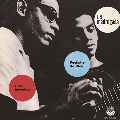
Na Madrugada (CD)
Martinho da Vila
Martinho da Vila (Martinho José Ferreira, born in 1938 in Duas Barras in the State of Rio de Janeiro). A legendary roots samba composer and singer associated with the Vila Isabel Samba School, Martinho has been active since the 1960s. He innovated in the samba-enredo Carnaval style and has achieved huge commercial success as a solo artist in the 1970s and again in the 1990s. Martinho’s daughter, Mart’nalia, is one of today’s leading sambistas.
Martinho da Vila — "Canta, Canta Minha Gente"
Martinho da Vila — "Minha Comadre"/"Garçom"
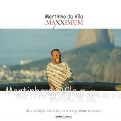
Maxximum (CD)
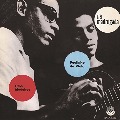
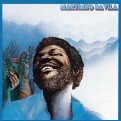

Martinho da Vila (CD)

Samba Enredo (CD)
Clara Nunes
Clara Nunes (1943-1983). The top-selling samba vocalist of the 1970s who achieved international success with her earthy voice and a strong repertoire that often explored Afro-Brazilian themes. She died tragically at the age of 40.
Clara Nunes — "Jogo de Angola"
Clara Nunes — "Portela Na Avenida"
Clara Nunes — “Canto das Três Raças"
(On Japanese TV)
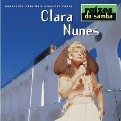
Clara Nunes (CD)

Clara Nunes (CD)
Beth Carvalho
Beth Carvalho (Elizabeth Santos Leal de Carvalho, born in 1946 in Rio). Nicknamed the “Godmother of the Samba,” Carvalho is a powerful singer, and one of the genre’s greatest champions, who helped launch the backyard pagode samba revival of the 1970s and ‘80s and has been propagating the compositions of countless unsung sambistas for decades.
Paulinho da Viola
Paulinho da Viola (Paulo César Batista de Farias, born in 1942 in Rio). Associated with the Portela Samba School, Paulinho is one of the samba world’s most influential figures, a composer, guitarist, cavaquinho player, and singer who has been disseminating the traditional samba and choro since the 1960s.
Beth Carvalho — "Corda no Pescoço"
Beth Carvalho, Arlindo Cruz & Sombrinha — "Canto De Rainha"
Beth Carvalho — "Água de Chuva no Mar"/"Vou Festejar"
Beth Carvalho — "Minha Festa"
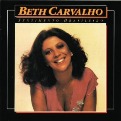
Sentimento Brasileiro (CD)
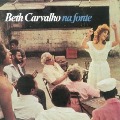
Na Fonte (CD)

Nos Botequins
Da Vida
(CD)
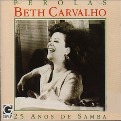
Perolas (CD)
Alcione
Alcione Dias Nazareth (born in São Luis do Maranhão in 1947) is a star samba singer who also covers ballads and regional Brazilian styles. She moved to Rio at the age of 20, and in 1975 came out with the hit album, A Voz do Samba (The Voice of Samba). Like Beth Carvalho, Alcione is a major champion of the samba and, also like Beth, is associated with the Mangueira Samba School.
Alcione
— "O Surdo"
Alcione — "Não Deixe O Samba Morrer"
(On Brazilian TV)

A Voz Do Samba (CD)
Zeca Pagodinho
Zeca Pagodinho (Jessé Gomes da Silva Filho, born in Rio in 1959). Zeca got his start as a part of the pagode movement in the 1970s and ‘80s and has remained one of the most vital and successful samba singers and composers of Brazil.
Beth Carvalho & Zeca Pagodinho
— "Camarão Que Dorme A Onda Leva"
Zeca Pagodinho — "SPC"
Zeca Pagodinho — "Quando Eu Contar Iaiá”/“Brincadeira Tem Hora"
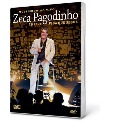
30 Anos Vida
que Segue (DVD)
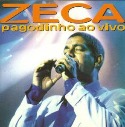
Ao Vivo (CD)
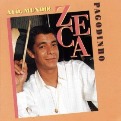
Alô, Mundo! (CD)
Grupo Fundo de Quintal
(The Backyard Group)
The pioneering band of the pagode samba movement (which began in the mid-1970s) and one of the most innovative, enduring, and successful roots samba groups in Brazil. A samba institution that is still going strong today, Fundo de Quintal has launched the careers of many of the most prolific composer-performers of the genre over the last four decades, including Almir Guinéto, Jorge Aragão, Arlindo Cruz, and Sombrinha. The group’s percussive core — Sereno, Ubirany, and Bira — is still one of the country’s hottest rhythm sections, appearing on the records of countless other samba artists.
Grupo Fundo de Quintal
— "Miudinho Meu Bem, Miudinho"
Grupo Fundo de Quintal with Sombrinha — "Boca Sem Dente"/"Só Pra Contrariar"
Grupo Fundo de Quintal with Almir Guinéto — "Não Quero Mais Saber Dela"
Grupo Fundo de Quintal — "Só Felicidade"
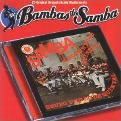
Samba É No Fundo Do Quintal (CD)

Simplicidade (CD)

Nossa Verdade (CD)
Jorge Aragão
Jorge Aragão (Jorge Aragão da Cruz, born in 1949 in Rio) is one of Brazil's most talented and popular samba composers and musicians with a compositional style that tends to explore the softer, harmonically rich elements of the genre. He was a founding member of Grupo Fundo de Quintal before beginning his solo career in 1982. His career took off around the year 2000.
Jorge Aragão — "Lucidez"
Arlindo Cruz
Arlindo Cruz (Arlindo Domingos da Cruz Filho, born in 1958 in Rio) is one of the most important composers, Brazilian banjo players, and vocalists on the samba scene. Bearing one of the most distinctive voices in samba, he was one of the lead singers and principal songwriters in Grupo Fundo de Quintal for over a decade and has over 450 songs recorded by other artists.
Arlindo Cruz — "O Meu Lugar"
Read
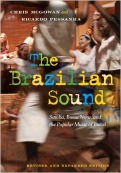
The Brazilian Sound
One of the most comprehensive books on Brazilian popular music in English with an excellent chapter on samba.

Music, Culture, Brazil: An Interview with Bryan McCann
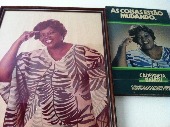
Rio Journal: Dona Ivone Lara, Samba Legend
Learn More
For Lifelong Learners
DISCUSSION Ideas
Discuss
• Discuss samba’s “staying power.” What factors have kept it in the forefront of Brazil’s cultural landscape?
Explore
• Dance! Attend a samba dance class or watch How to Learn Samba videos. Throw a listening/dance party featuring the music from the classic samba stars spotlighted above.
• Try making some traditional Brazilian dishes such as feijoada.
For Students
Teaching Ideas
Explore
• Have students try basic samba dance movements by following the How to Learn Samba videos.
Share
• Have students plan and execute a Samba Teach-In featuring the music, dance, food, and cultural and historical content they’ve learned through their tour of Samba at the Dawn of Modern Brazil. [Addresses CCSS Speaking and Listening Standards 1, 2 and 5.]
